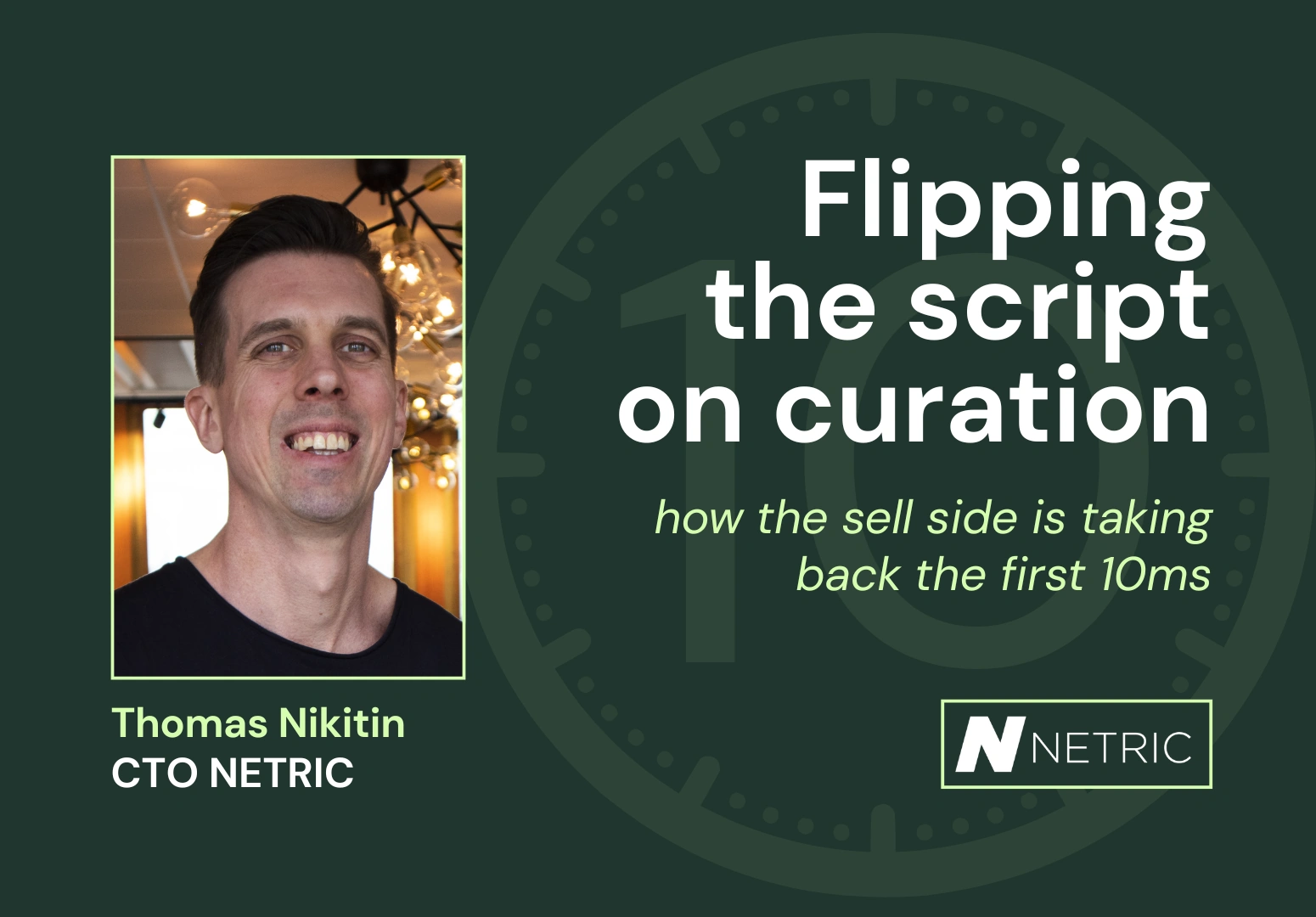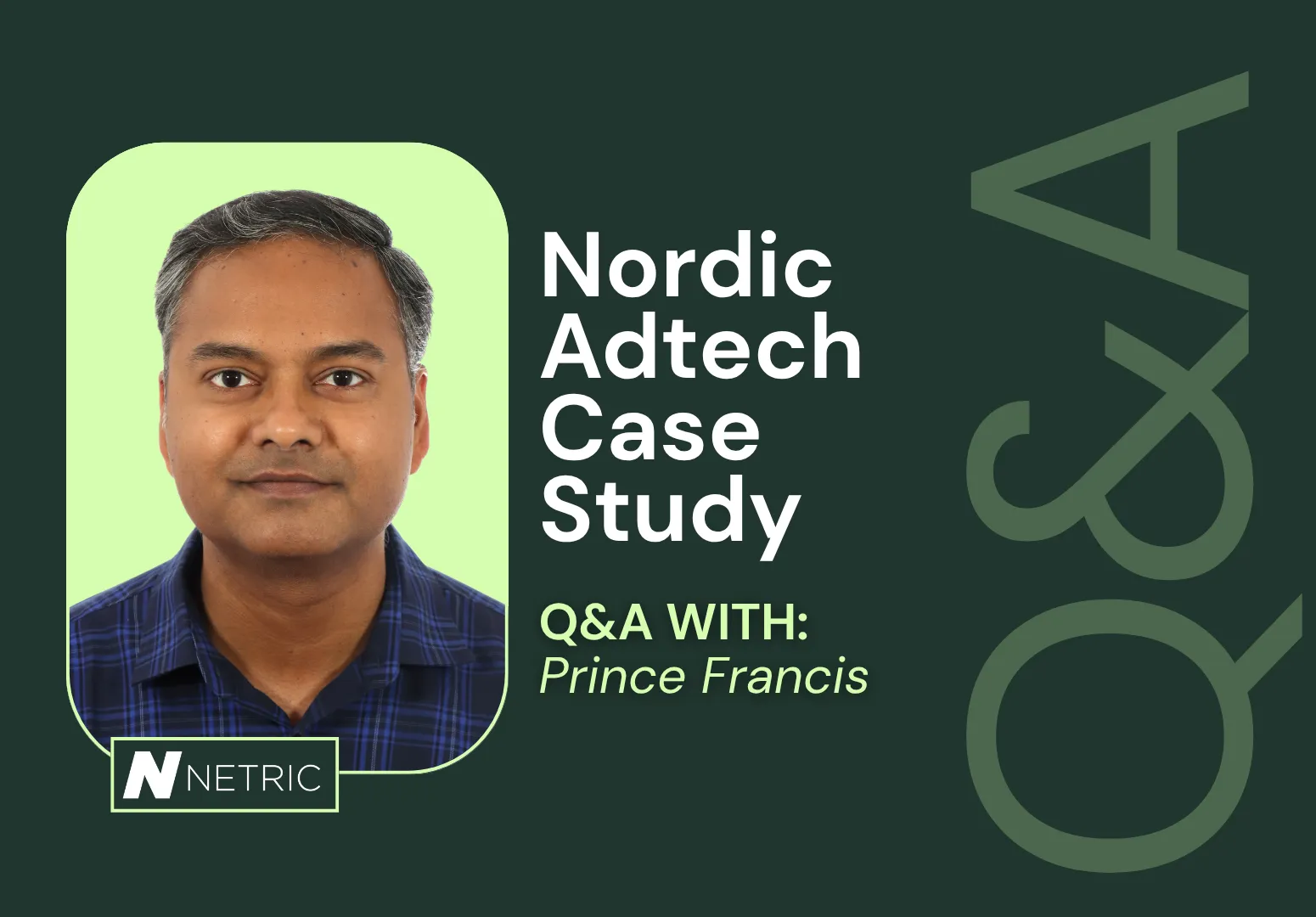Flipping the script on curation
How the sell side is taking back the first 10ms

At our recent Stockholm Programmatic Summit 2025, we explored the latest disruption in RTB which is emerging on the sell side: AI-driven decisioning.
As John Tigg, SVP of Buyer Development at Index Exchange, explained in his keynote, it starts at the very beginning of the 10-millisecond window. For two decades, most sophistication sat in the DSP while the exchange handled infrastructure. That skew came from a simple constraint: the sell side had “a little bit less than 10 milliseconds” to do its work, leaving no time for deeper decisioning.
Now SSPs are breaking free of that constraint.
Moore’s law strikes again
We all know the classic flow of programmatic advertising: an opportunity occurs, the ad server calls the exchange, the exchange fans out bid requests, the DSPs evaluate and bid, and the winner is sent back. End to end, the round trip is roughly 200 milliseconds. Historically, the sell side completed its verification process (for compliance, integrity and safety), ran the auction, and moved on - the DSP decided whether and how to bid.
Over the last couple of years, however, advances in compute speed and cloud processing have compressed decisioning so that what once took around 200 milliseconds can now be executed inside the 10-millisecond budget at the point a bid request is generated. Enter: Sell-side decisioning.
Why the sell side is uniquely positioned
As Tigg says, the exchange sees “the whole internet” and intentionally funnels it to match the QPS (queries per second) limits of the DSPs. That vantage point means the sell side observes far more auctions, users and content than any single buyer. When meaningful logic is applied upstream, the market receives fewer requests and a higher proportion of those are worth bidding on. Intelligence is not removed from the DSP; it is re-sequenced so the earliest decision improves everything that follows.
Use case 1 - viewability at the source: Most campaigns carry a viewability KPI. Tigg’s question is straightforward: why wait to enforce it on the demand side? Instead, apply the same standard before the bid request is ever sent. In practice, this produces much higher performance against far fewer impressions - intelligent impressions which a DSP actually wants to see. The net effect is cleaner auctions and lower processing overhead across the supply chain, without changing buyer workflow.
Use case 2 - custom bidding inside the exchange: There’s also a more advanced pattern: custom bidding models deployed on the supply side. Tigg notes that Index Exchange is currently working with nearly 10 custom bidding companies looking to learn from, and act on, the full bidstream. The draw is data gravity. With roughly 500 billion auctions per day translating to about two petabytes of uniform signals, the sell side provides a training and execution ground at a scale that accelerates model quality and real-time effectiveness.
Driving efficiency without breaking workflows
This approach is not hypothetical. According to Tigg, there are agentic AI firms, data activation platforms, and media agencies with in-house data science already deploying models on the sell side. These aim to extend reach, improve match rates on small first-party audiences, and bring proprietary intelligence closer to where opportunities originate. Crucially, nothing about the buying interface needs to change: you still buy through the same DSP. The change is where intelligence executes, not how buyers transact.
This shift is as much about efficiency as it is about performance. Pre-curation decisioning reduces unnecessary traffic, sharpens the candidate set, and focuses compute resources on opportunities with a higher likelihood of success. The result is a much cleaner, and much more efficient supply chain, that can also deliver better outcomes for advertisers and publishers. In other words, decisioning in the first 10 milliseconds cuts waste before it is created.
What this means for buyers and publishers
For buyers, upstream intelligence means fewer off-target bid requests to triage, better alignment with KPIs and the option to run bespoke models where data density is highest – on the SSP. For publishers, it means their inventory is represented more accurately and competitively, with a greater proportion of requests converting into quality bids. Both sides benefit when the exchange curates with the buyer’s objective in mind before the request ever leaves the publisher’s stack.
Tigg places this moment alongside RTB and header bidding as a genuine step-change. The difference is not a new protocol or pipe, but a re-sequencing of when and where the best decisions get made.
The sell side is no longer just infrastructure - it’s becoming the place where intelligence originates, shaping cleaner auctions, sharper targeting, and more value across the ecosystem. In short, the start of the 10 milliseconds is finally as important as the end, and the organisations that build for that reality will set the pace of programmatic’s next chapter.
By partnering with Index Exchange, we bring transparency, efficiency, and premium demand to the Nordic market. Ready to see how smarter decisioning can transform your monetisation? Connect with our team today at netricsales.com/contact.


